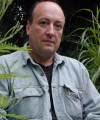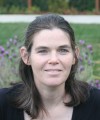ISMB/ECCB 2009 Keynotes
Trey Ideker, PhD
ISCB Overton Prize
Associate Professor
Department of Bioengineering
UC San Diego, La Jolla, California, USA

Presentation Title: New Challenges and Opportunities in Network Biology
Date: Tuesday, June 30
Time: 4:45 p.m.
Room: Victoria Room
ISCB Overton Prize
Associate Professor
Department of Bioengineering
UC San Diego, La Jolla, California, USA

Presentation Title: New Challenges and Opportunities in Network Biology
Date: Tuesday, June 30
Time: 4:45 p.m.
Room: Victoria Room
Webb Miller
ISCB Senior Scientist Accomplishment Award
Pennsylvania State University
University Park, PA, USA

Presentation Title: Bioinformatics Methods to Study Species Extinctions
Date: Thursday, July 2
Time: 2:00 p.m.
Room: Victoria Room
ISCB Senior Scientist Accomplishment Award
Pennsylvania State University
University Park, PA, USA

Presentation Title: Bioinformatics Methods to Study Species Extinctions
Date: Thursday, July 2
Time: 2:00 p.m.
Room: Victoria Room
Pierre-Henri Gouyon
Muséum National d’Histoire Naturelle
Equipe Botanique
MNHN/CNRS Origine, Structure et Evolution de la Biodiversité
Paris, France

Presentation Title: Information and Biology
Date: Monday, June 29
Time: 9:00 a.m.
Room: Victoria Room
Muséum National d’Histoire Naturelle
Equipe Botanique
MNHN/CNRS Origine, Structure et Evolution de la Biodiversité
Paris, France

Presentation Title: Information and Biology
Date: Monday, June 29
Time: 9:00 a.m.
Room: Victoria Room
Daphne Koller
Department of Computer Science, Stanford University
Stanford, USA

Presentation Title: Individual Genetic Variation: From Networks to Mechanisms
Date: Tuesday, June 30
Time: 9:00 a.m.
Room: Victoria Room
Department of Computer Science, Stanford University
Stanford, USA

Presentation Title: Individual Genetic Variation: From Networks to Mechanisms
Date: Tuesday, June 30
Time: 9:00 a.m.
Room: Victoria Room
Dr. Thomas Lengauer
Max-Planck Institute for Informatics
Saarbrücken, Germany

Presentation Title: Chasing the AIDS Virus
Date: Wednesday, July 1
Time: 4:45 p.m.
Room: Victoria Room
Max-Planck Institute for Informatics
Saarbrücken, Germany

Presentation Title: Chasing the AIDS Virus
Date: Wednesday, July 1
Time: 4:45 p.m.
Room: Victoria Room
Eugenia María del Pino Veintimilla
Pontifical Catholic University of Ecuador (PUCE)
Quito, Ecuador

Presentation Title: The comparative analysis reveals independence of developmental processes during early development in frogs
Date: Wednesday, July 1
Time: 9:00 a.m.
Room: Victoria Room
Pontifical Catholic University of Ecuador (PUCE)
Quito, Ecuador

Presentation Title: The comparative analysis reveals independence of developmental processes during early development in frogs
Date: Wednesday, July 1
Time: 9:00 a.m.
Room: Victoria Room
Tomaso A. Poggio
Massachusetts Institute of Technology
Cambridge, USA

Presentation Title: Computational Neuroscience: Models of the Visual System
Date: Monday, June 29
Time: 4:45 p.m.
Room: Victoria Room
Massachusetts Institute of Technology
Cambridge, USA

Presentation Title: Computational Neuroscience: Models of the Visual System
Date: Monday, June 29
Time: 4:45 p.m.
Room: Victoria Room
Mathias Uhlen
Royal Institute of Technology (KTH)
Stockholm, Sweden

Presentation Title: A global view on protein expression based on the Human Protein Atlas
Date: Thursday, July 2
Time: 9:00 a.m.
Room: Victoria Room
Royal Institute of Technology (KTH)
Stockholm, Sweden

Presentation Title: A global view on protein expression based on the Human Protein Atlas
Date: Thursday, July 2
Time: 9:00 a.m.
Room: Victoria Room

















 Trey Ideker has an impressed career. He obtained his PhD in 2001, now at UCSD - Diego M. Riaño-Pachón
Trey Ideker has an impressed career. He obtained his PhD in 2001, now at UCSD - Diego M. Riaño-Pachón